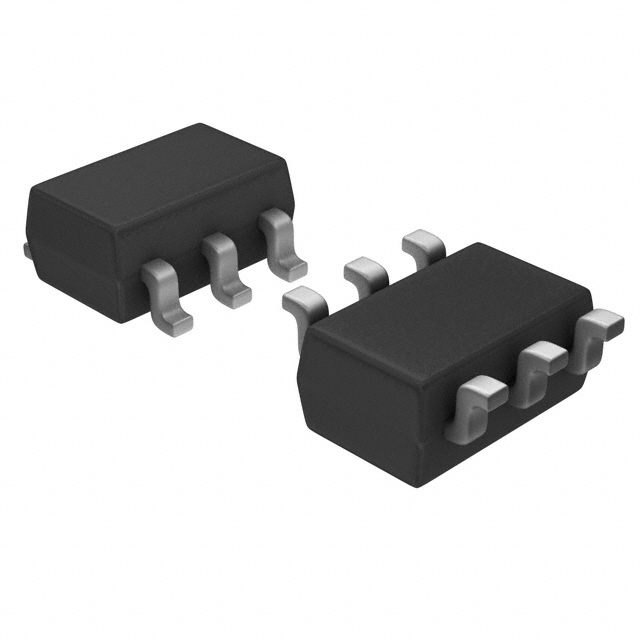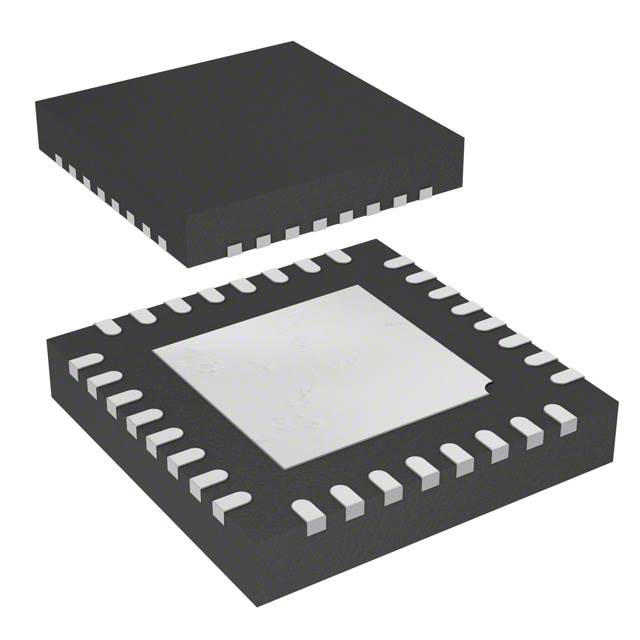MCP65R41T-1202E/CHY datasheet | price & pdf
- Brands: Microchip Technology
- Download: MCP65R41T-1202E/CHY Datasheet PDF
- Price: inquiry
- In Stock: 17,211
- Type: with Voltage Reference
- Number of Elements: 1
- Output Type: CMOS, Push-Pull, TTL
- Package: SOT-23-6

FREE delivery for orders over HK$250.00

Quick response, quick quotaton

Flash shipment,no worries after sales

Original channel,guarantee of the authentic products
MCP65R41T-1202E/CHY
If your project needs reliable voltage monitoring, consider the MCP65R41T-1202E/CHY voltage supervisor IC. It precisely detects voltage at a fixed 1.20V threshold, helping your system maintain stable power levels.
One standout feature is its extremely low power consumption—perfect for battery-operated or energy-sensitive designs. Its rapid response helps your system quickly react to voltage fluctuations, ensuring stability and protection.
Its open-drain output easily interfaces with different logic circuits, offering great design flexibility. Plus, the tiny SOT-23-3 package saves valuable board space, ideal for compact projects.
Designed for tough environments, this IC reliably operates from -40°C to +125°C, making it suitable for industrial and automotive applications. With the MCP65R41T, you get dependable, long-term voltage monitoring, enhancing overall system safety and reliability.
MCP65R41T-1202E/CHY pinout

Here’s the pinout of the MCP65R41T-1202E/CHY in a clear table:
| Pin Number | Pin Name | Description |
|---|---|---|
| 1 | VDD | Positive supply voltage |
| 2 | VIN+ | Non-inverting input |
| 3 | VIN– | Inverting input |
| 4 | VSS | Ground (negative supply voltage) |
| 5 | VOUT | Comparator output (push-pull) |
| 6 | VREF | Internal 1.2V reference output |
When you’re designing circuits with the MCP65R41 IC, a few simple tips can help you get great results. First, always place a small capacitor (around 0.01 to 0.1 µF) close to the VDD pin. This ensures stable operation and prevents unexpected behavior.
The IC can handle rail-to-rail inputs, meaning your signals on VIN+ and VIN- can range slightly beyond the supply rails—from VSS minus 0.3V up to VDD plus 0.3V. Plus, its push-pull output saves you from needing external pull-up resistors, simplifying your design.
Don’t forget the VREF pin provides a stable 1.2V reference, ideal for precise comparator thresholds. To avoid issues from contamination or moisture, add guard rings around high-impedance input lines.
Also, be cautious of heavy capacitive loads on the VREF pin; over 2000 pF can cause oscillations during power-up. Finally, keep supply voltages between 1.8V and 5.5V, and operating temperatures from -40°C to +125°C for optimal performance.
MCP65R41T-1202E/CHY Equivalent




MCP65R41T-1202E/CHY Equivalent
Below is a comparison table of potential equivalent comparators to the MCP65R41T-1202E/CHY:
| Parameter | MCP65R41T-1202E/CHY | MCP65R41T-2402E/CHY | TLV3011AIDBVR (TI) | TLV6703AIDRVR (TI) |
|---|---|---|---|---|
| Package | SOT-23-6 | SOT-23-6 | SOT-23-6 | SOT-23-6 |
| Output Type | Push-Pull | Push-Pull | Push-Pull | Open-Drain |
| Reference Voltage (V) | 1.2 | 2.4 | 1.242 | 0.405 |
| Supply Voltage (V) | 1.8 – 5.5 | 1.8 – 5.5 | 1.8 – 5.5 | 1.8 – 18 |
| Quiescent Current (µA) | 2.5 (typ) | 2.5 (typ) | 0.6 (typ) | 2.5 (typ) |
| Propagation Delay (µs) | 4 | 4 | 0.6 | 8 |
| Input Offset Voltage (mV) | ±3 (typ) | ±3 (typ) | ±1 (typ) | ±3 (typ) |
| Hysteresis (mV) | 5 | 5 | 3 | 10 |
| Operating Temp (°C) | –40 to +125 | –40 to +125 | –40 to +125 | –40 to +125 |
| Manufacturer | Microchip | Microchip | Texas Instruments | Texas Instruments |
When you’re picking a replacement for the MCP65R41T-1202E/CHY, here are a few pointers to help you choose the best option. First, check the reference voltage. Make sure your substitute matches your project’s needs—some alternatives, like the MCP65R41T-2402E/CHY, provide 2.4V, while others like TLV3011AIDBVR offer about 1.242V.
Next, consider your output needs. If your circuit requires a push-pull output, steer clear of open-drain alternatives like the TLV6703AIDRVR unless you’re okay adding an external resistor.
For battery-powered designs, look for replacements with super-low power use, like the TLV3011AIDBVR, which uses only 0.6 µA. Also, if speed matters, go for a comparator with a quick response like the TLV3011AIDBVR, featuring just 0.6 µs delay.
Double-check voltage compatibility too. Some, like TLV6703AIDRVR, handle up to 18V. Lastly, even if the packages look identical, confirm pin layouts to avoid redesigning your PCB.
MCP65R41T-1202E/CHY Voltage Comparator
If you’re thinking about using the MCP65R41T-1202E/CHY for overtemperature detection, let me walk you through how it works. You’ll typically pair it with a thermistor—a resistor that changes value based on temperature. You set up a simple voltage divider using the thermistor and a fixed resistor. The midpoint voltage from this divider feeds into the comparator’s non-inverting input (VIN+).
The comparator has a built-in 1.2 V reference at the inverting input (VIN–). As things heat up, your thermistor’s resistance changes, shifting the voltage at VIN+. When this voltage crosses the 1.2 V reference point, the comparator reacts by switching its output state. This gives your system a clear, reliable signal that it’s getting too hot, allowing you to take protective measures. It’s a straightforward setup that works effectively for keeping your circuits safe from overheating.
MCP65R41T-1202E/CHY Low-Power CMOS Comparator
When you’re building a battery monitoring circuit, the MCP65R41T-1202E/CHY is a handy tool for catching undervoltage conditions. Let me show you how it works. You set up a voltage divider that scales your battery voltage down to a level the IC can handle easily. This scaled-down voltage goes straight into the non-inverting input (VIN+).
Inside the IC, there’s a built-in 1.2 V reference connected to the inverting input (VIN–). So, whenever your battery’s voltage drops and the scaled-down voltage falls below 1.2 V, the comparator instantly reacts. The output pin switches its state, alerting your system that the battery is running low. You can use this signal to trigger warnings or even disconnect the load to protect the battery from deep discharge. It’s a straightforward way to ensure your battery-powered devices run reliably without unexpected shutdowns.
MCP65R41T-1202E/CHY Push-Pull Output Comparator
If you’re setting up a battery undervoltage detector, the MCP65R41T-1202E/CHY makes the job pretty straightforward. First, you’ll use a simple resistor divider to scale your battery voltage down to a manageable level. Feed this scaled-down voltage into the chip’s non-inverting input (VIN+), and connect the inverting input (VIN–) directly to its built-in 1.21 V reference.
Here’s where the chip really shines: once your battery voltage dips below your preset threshold, the comparator output flips its state immediately. And because this output can source and sink a few milliamps, it can directly control things like an LED indicator, a microcontroller interrupt pin, or even drive a small MOSFET—no extra pull-up resistor needed.
The best part? This setup keeps your power usage ultra-low, only a few microamps in idle mode, helping your battery last longer while reliably preventing deep discharge.
MCP65R41T-1202E/CHY Comparator with Integrated Reference Voltage

Here’s a neat way you can use the MCP65R41T-1202E/CHY for efficient overcurrent protection. This IC comes with a built-in 1.21 V reference voltage, making it perfect for monitoring voltage across a shunt resistor in your circuit. When the current running through your shunt resistor rises enough to push its voltage drop above that 1.21 V threshold, the IC’s push-pull output flips state in just a few microseconds. This quick reaction can directly trigger a MOSFET gate or alert your MCU to disconnect the load, effectively preventing damage from overcurrent conditions.
What’s great about this setup is how little power it consumes—only around 2.5 µA during standby—so you won’t drain your battery quickly. And the best part? You don’t even need external pull-up resistors or extra voltage references. It’s an easy, reliable, and low-power solution to keep your electronics safe from overload conditions.




















